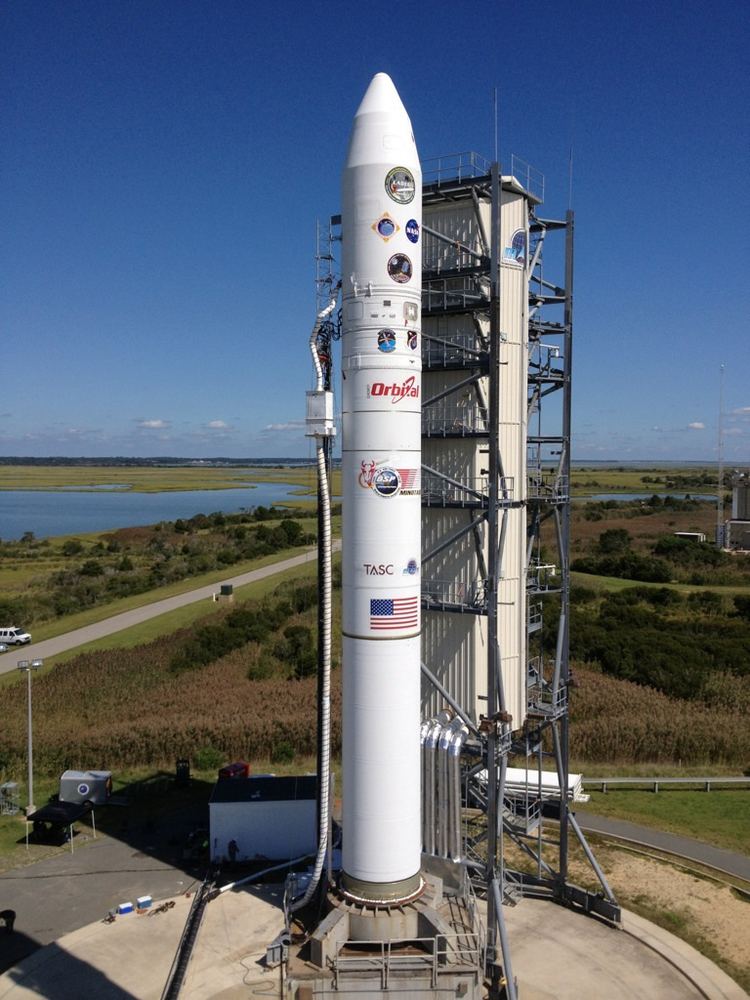Manufacturer Orbital Sciences Height 24.56 m Mass 89,373 kg | Country of origin United States Diameter 2.67 m | |
 | ||
Function Expendable launch system | ||
The Minotaur V is an American expendable launch system derived from the Minotaur IV, itself a derivative of the LGM-118 Peacekeeper ICBM. It was developed by Orbital Sciences Corporation, and made its maiden flight on 7 September 2013 carrying the Lunar Atmosphere and Dust Environment Explorer spacecraft for NASA.
Contents
Design
The Minotaur V is a five-stage vehicle, and is designed to place up to 630 kilograms (1,390 lb) of payload into a geosynchronous transfer orbit, or 342 kilograms (754 lb) on a trans-lunar trajectory. It consists of a Minotaur IV+, with a Star-37 as a fifth stage. Two variants are available, one with a spin-stabilized Star-37FM upper stage, and the other with a Star-37FMV capable of three-axis stabilization. The Star-37FMV upper stage is heavier, reducing payload capacity, but is more maneuverable.
Launch pads
Space Launch Complex 8 at the Vandenberg Air Force Base, Pad 0B at the Mid-Atlantic Regional Spaceport (MARS), and Pad 1 of the Kodiak Launch Complex are all capable of accommodating the Minotaur V. As of 2013, all scheduled launches are from MARS.
Launch history
The initial launch of a Minotaur V occurred on 7 September 2013 at 03:27 UTC from Launch Pad 0B at the Mid-Atlantic Regional Spaceport in Virginia. The payload for the maiden flight was the LADEE lunar exoatmosphere science spacecraft. While now separated from the LADEE spacecraft, both the fourth and fifth stages of the Minotaur V reached orbit, and are now derelict satellites in Earth orbit.
